Call Us At +86 17381572955
There are 8,400 yoga postures. In fact, there are only 8 categories, and it is enough to master 5 categories (joint theory)
Yoga is an ancient practice that aims to balance the body, mind, and spirit through various poses (also known as asanas) and controlled breathing. Practicing yoga can increase flexibility, strength, and balance, while improving posture. Deep and conscious breathing in yoga helps in relaxation and stress reduction, leading to inner peace. Yoga practice teaches you to focus on the present moment, promoting harmony between the body and mind. This helps alleviate anxiety and stress, and enhances self-awareness and self-acceptance.
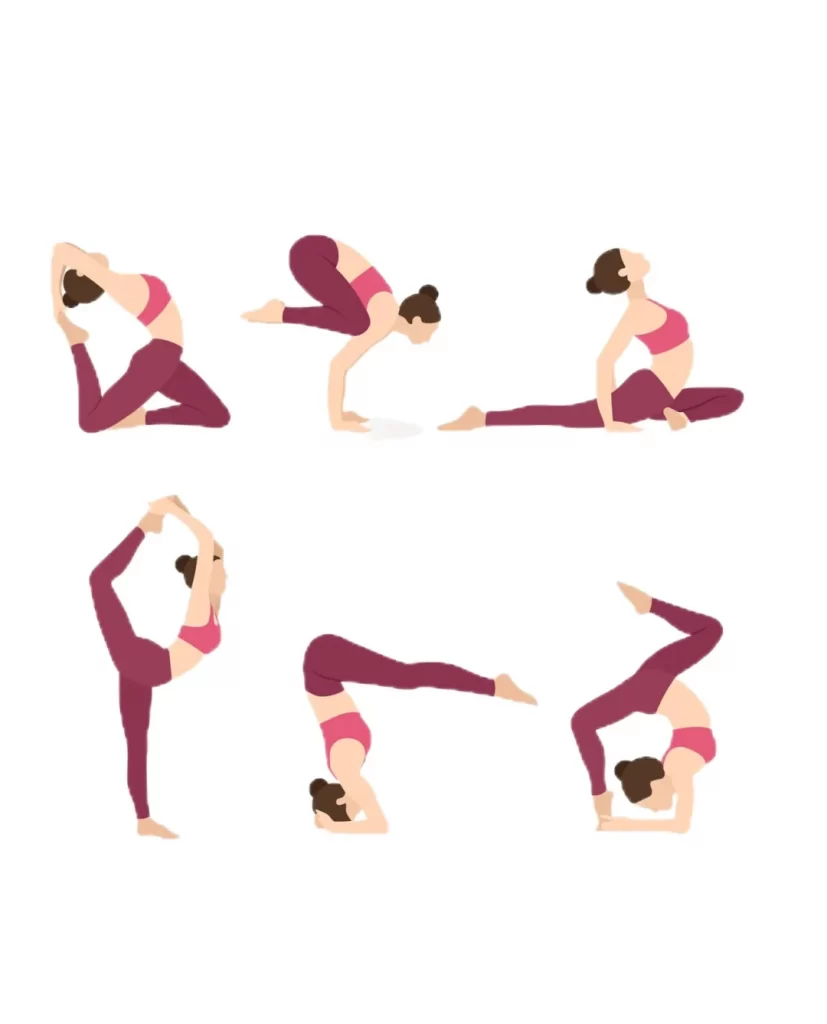
Categories of Yoga Poses
Different yoga systems have different effects on the body, enhancing the circulatory, digestive, respiratory, excretory, endocrine, reproductive, and nervous systems, and maintaining their balance. Yoga poses can be classified into several categories based on different forms and focal points:
1. Standing Poses: Promote digestion, relieve constipation, regulate kidneys, and improve circulation and respiration.
2. Seated Poses: Increase flexibility and mobility in the hips, knees, and ankles, and help prevent and treat rheumatism.
3. Forward Bends: Massage abdominal organs, promote digestion and excretion, strengthen the reproductive system, and calm the mind.
4. Backbends Poses: Increase shoulder joint flexibility, expand the chest cavity, and enhance lung capacity.
5. Side Bends: Reduce side waist fat, promote lymphatic detoxification in the armpits and under the ribs, and improve skin and internal organ issues.
6. Twists: Gently massage internal organs, alleviate mild back pain, and soothe and calm the mind.
7. Balancing Poses: Train balance and coordination, enhance concentration, and achieve inner calm.
8. Inversions: Promote blood circulation, reduce heart burden, and relieve pressure on leg veins.
Detailed Explanation of Five Common Yoga Poses
Forward Bends
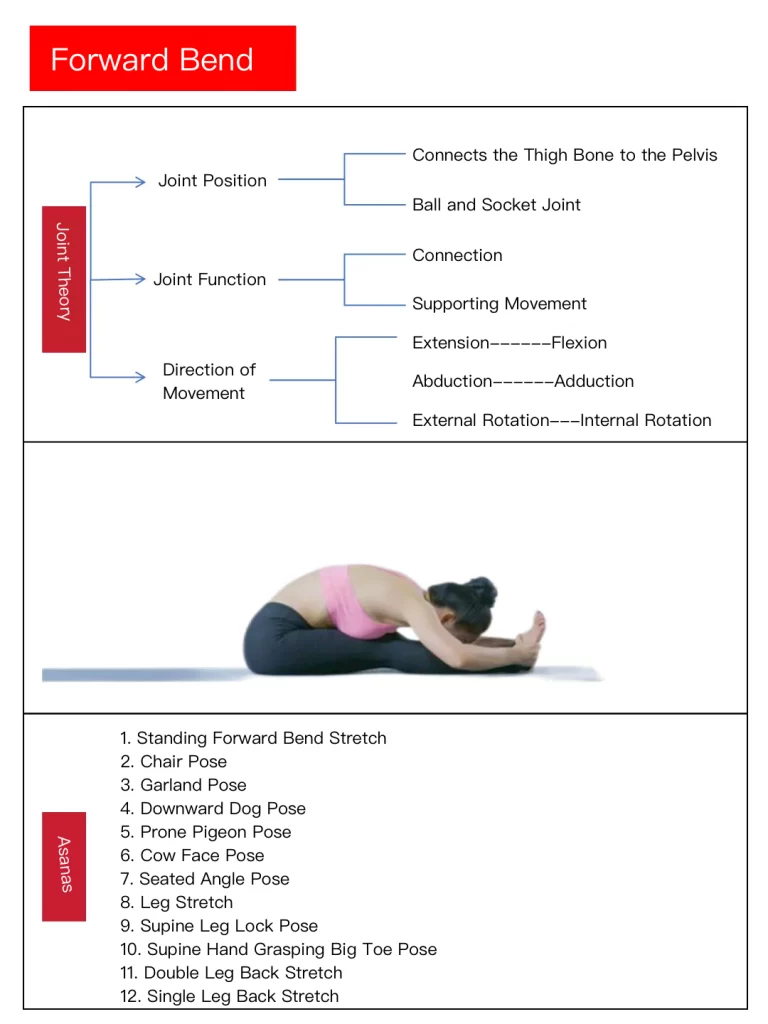
Benefits:
• Prevent hypoxia headaches, reduce stress, and improve complexion.
• Stretch and strengthen the back muscles, promote blood circulation in the back, and increase spinal flexibility.
• Gently compress and massage abdominal organs, promoting digestion and excretion.
• Stretch the muscles and ligaments on the back of the legs.
• Sitting forward bends supply fresh blood to the pelvis, strengthening the reproductive system and calming the mind, helping the nervous system relax.
Precautions:
• Avoid excessive force to prevent lower back or hamstring injuries.
• Those with abnormal blood pressure or anemia should slow down the pace of practice.
Lunge Poses
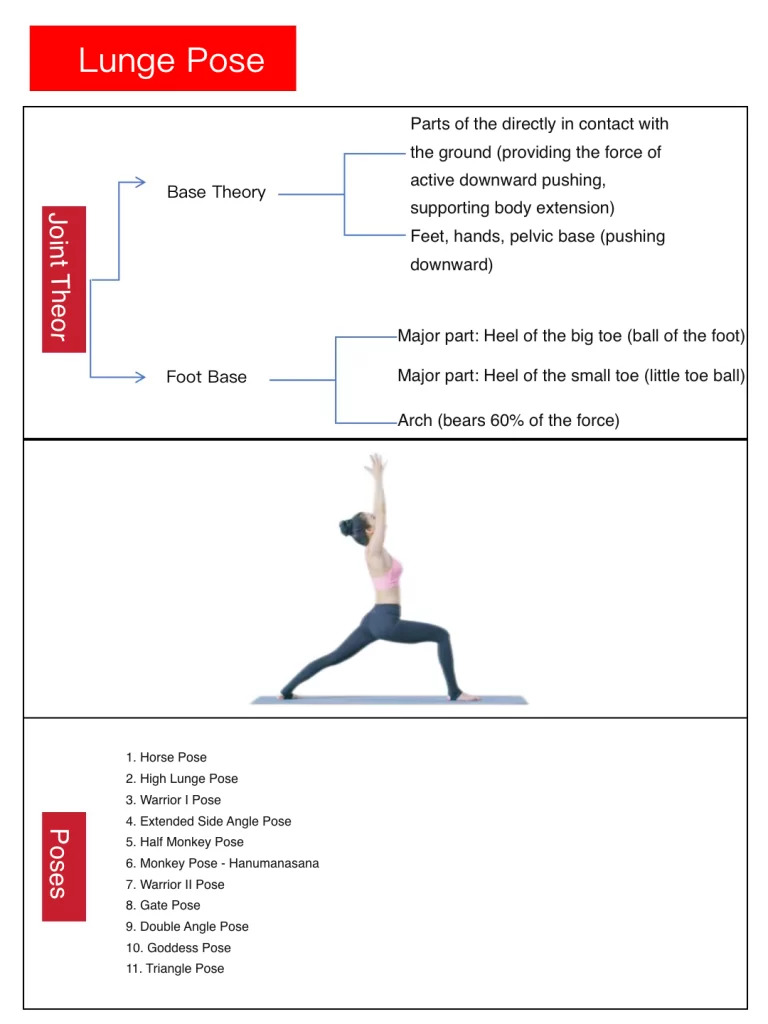
Benefits:
• Strengthen leg muscles, promote digestion, relieve constipation, and regulate kidneys.
• Improve circulation and respiration.
• Enhance strength and mobility in the back, hips, knees, neck, and shoulders.
Precautions:
• Avoid hyper extending the knees while standing.
Twisting Poses
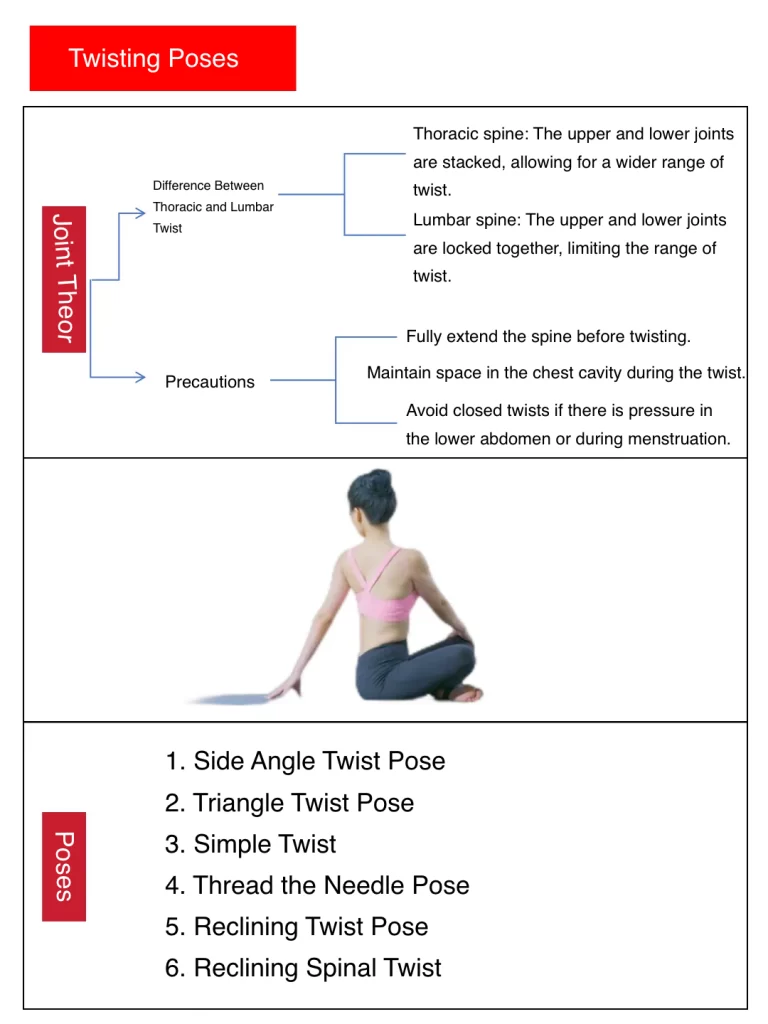
Benefits:
• Strongly twist the lumbar, thoracic, and cervical spine, beneficial for the nervous system and calming the mind.
• Gently massage internal organs, alleviating mild back pain.
Precautions:
• Pay attention to spinal extension during twists to avoid the risk of disc protrusion or herniation.
• Tighten abdominal and back muscles to twist the spine safely.
Balancing Poses
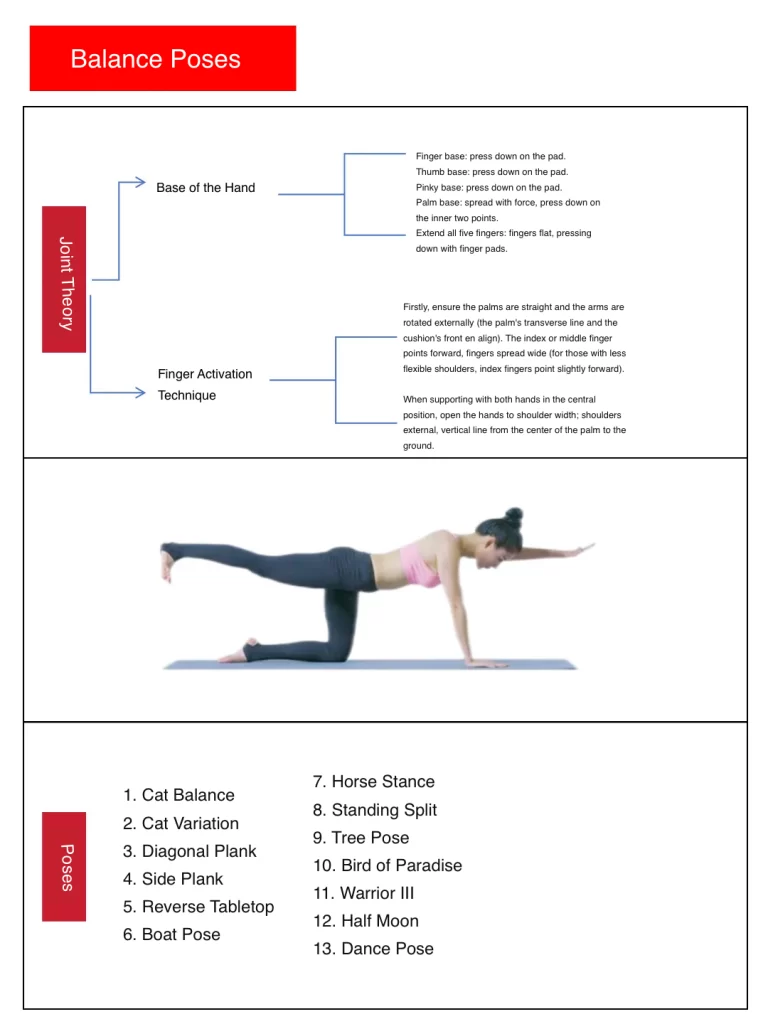
Benefits:
• Develop balance and coordination, enhance concentration, and find inner peace and stability.
Precautions:
• Balance the mind and thoughts before balancing the body.
• Focus on the present pose to maintain balance and coordination, avoiding distractions.
Backbends Poses
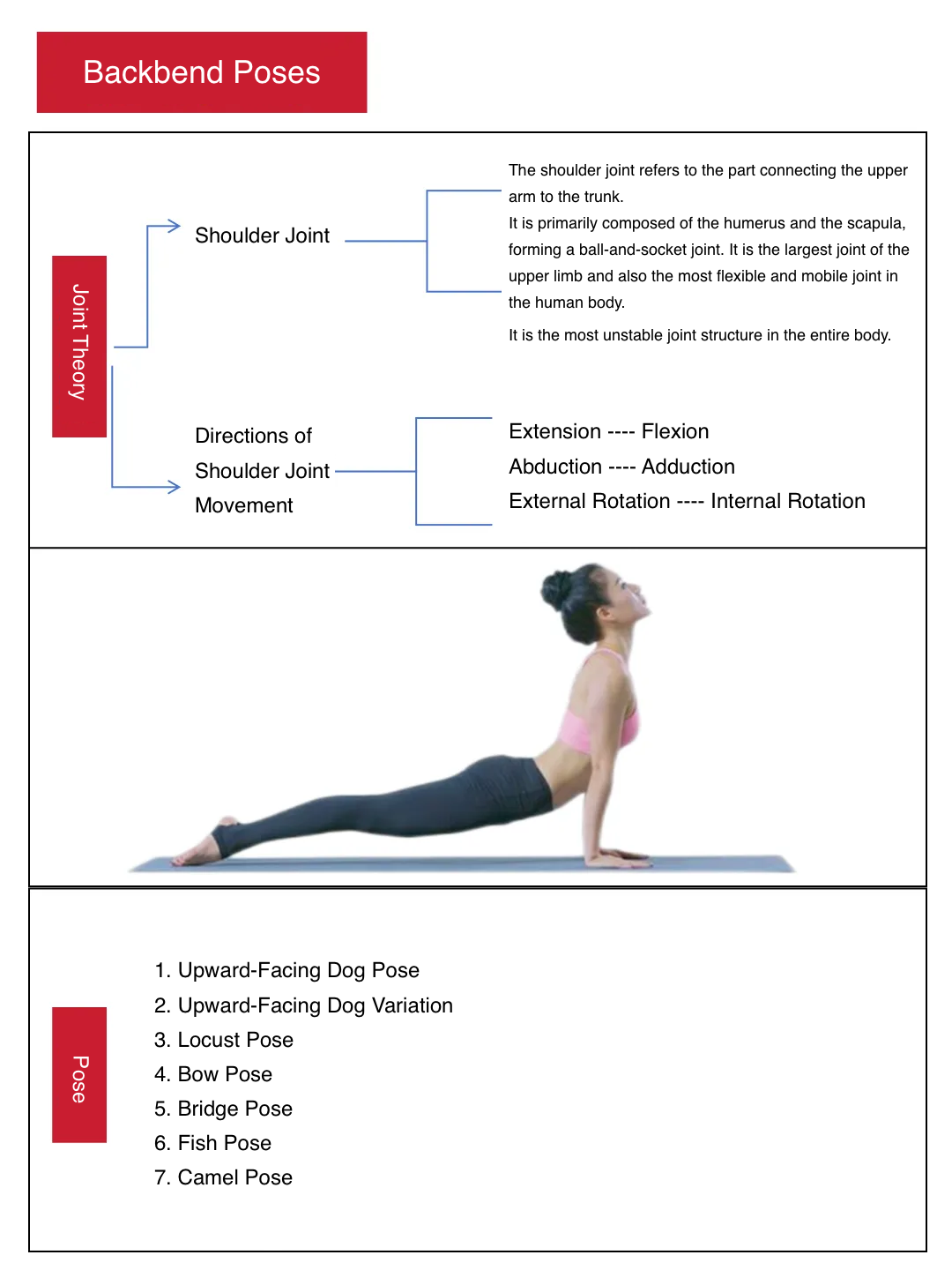
Benefits:
• Require spinal flexibility and strength.
• Increase blood supply to the spinal area, benefiting the central nervous system.
• Stretch the abdominal area, regulating weaker abdominal organs.
• Increase shoulder joint flexibility, expand the chest cavity, and enhance lung capacity for deep breathing.
Precautions:
• Avoid excessive force on the thoracic spine to prevent spinal hyperextension and chest compression.
• Focus on spinal extension and spatial awareness, practicing within limits.
Practicing yoga poses requires concentration and mindfulness. Only through continuous and deep practice can one explore the mysteries of yoga poses and find inner peace.
There are some yoga postures named after animals in the article. Do you know how they came from? Let’s learn about yoga postures named after animals!



